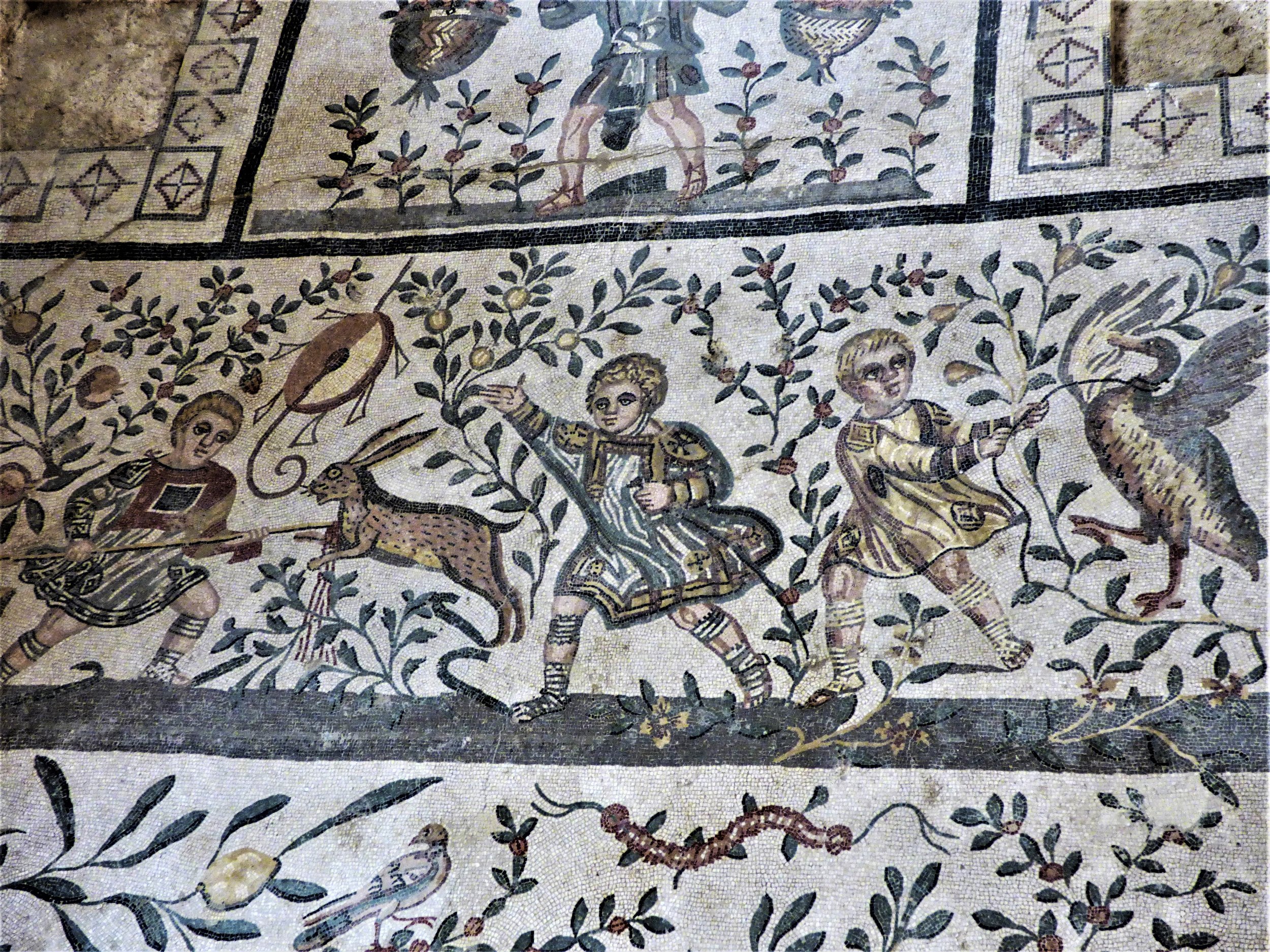Piazza Armerina
Ozymandias in Sicily
“My name is Ozymandias, king of kings:
Look on my works, ye Mighty, and despair!” – Shelley
The Sicilian town of Piazza Armerina began in the 11th century during the Norman domination of Sicily. It was first settled by Saracens and later populated by immigrants from Lombardy, which helps to explain traces of a unique dialect in the native speech. The odd name evidently stems from the fact the town was simply known as “Piazza” – which means both “square” and “market” – for centuries, because it was the local market centre. “Armerina” was added later to acknowledge one of the town’s hills, Colle Armerina. Narrow, steep medieval streets lead to the very top of the town where there is a fine, baroque cathedral with a 15th-century bell tower. From the square by the church there is a panoramic view of the surrounding fertile farmland.
Duomo of Piazza Armerina, Cattedrale di Maria Santissima delle Vittorie
But the town is known world-wide only because there is a great villa, three kilometres southwest, nestled in a green and pleasant valley.
Most of the walls are gone, of course. The villa was built long ago; no one can say exactly when. The floors are still there, though, and that’s a very good thing, since there are no other floors like these in all the wide world. Sometime between the late 3rd and the end of the 4th centuries AD, someone lived in this spot like a potentate, in 62 rooms paved with over 120 million mosaic tesserae, in approximately 35 different colours. There was a monumental entrance in the form of a triumphal arch, and a peristyle with a central pool and fountain, surrounded by a loggia of 32 Corinthian columns made of white marble. Nearby the family and guests could stroll the 138-metre length of a covered ambulatory. There were dining rooms, dressing rooms, and bedrooms, of course, not to mention a lararium, dedicated to the worship of the lares and penates – Roman household gods. There was also a gymnasium next to a bath complex with cold, tepid, and hot pools, like a private version of the public baths in Rome; and in all the rooms, large and small, the floors were covered with pictures made of small stone tesserae, coloured like jewels.
The Main Peristyle
It’s clear that the villa, now known as Villa Romana del Casale, was the centre of a vast rural estate called a latifundium. Such privately held estates were subdivided and managed by leaseholders, who further sublet to farmers. The fieldwork was done by slaves. But who owned the villa, and when was it built? Who decided to decorate over 4,000 square metres of pavement with such vivid images? There are many subjects. In the Corridor of the Great Hunt, exotic animals from all over the known world – lions, tigers, elephants, ostriches and more – are shown being trapped and loaded on ships bound for Rome. There are other hunting and fishing scenes elsewhere.
Capturing an Ostrich
In one room, ten long-limbed young women in costumes resembling bikinis are shown competing in athletic events. There are scenes of chariot racing in the Circus Maximus, and another event with children driving chariots pulled by peacocks, pigeons, flamingos and geese. There are depictions of mythical and historical events, like the Rape of the Sabine women. The owner and his family obviously were people with a multitude of interests; but do the images give us enough clues to identify them?
The famous “Bikini Girls”
The arguments between scholars go back and forth like a game of intellectual tennis. One faction begins service by placing the building of the palace before 310 AD, and posit that it belonged to Maximian, co-emperor with Diocletian, because the scene showing chariot racing in the Circus Maximus had only one obelisk, the one erected by Augustus in 10 AD. Since another obelisk was erected by Constantius II in 357 AD, the mosaic must have been created before that date. Who was wealthy enough to build the estate but an emperor? Besides, mosaics of the family depict the owner’s son with a squint, which Maximian’s son, Maxentius, was known to have had.
Chariot Racing
Another scholarly camp returns serve by observing that the single obelisk in the mosaic is not in the middle of the Circus Maximus’ spina, the dividing wall between the two sides of the chariot-racing course, but rather toward one end, where it was moved in 327 AD to make room for Constantius’ second obelisk. Therefore, they say, the mosaic was created after 327. Since Maximian died in 310, and Maxentius died at the Battle of the Milvian Bridge in 312, the villa could not have been theirs. Anyway, they insist, the alleged squint is just a figment of mosaic-induced imagination. And so the game continues.
Children’s Hunting Scene
It has been estimated that the labour necessary to create the masterful artworks took nearly 21,000 working days. The teams of artists who made the mosaics probably came from North Africa, and some of them signed their work with cryptic symbols, which we, after so many centuries, cannot interpret. It would be as thrilling to know their stories as to know about the life of the aristocratic owner, who built a splendid monument to celebrate his greatness, and then forgot to sign it.
© Text © 2018 by Joe Gartman; Photographs © 2018 by Patricia Gartman. First published in Italia! Magazine, March 2018






